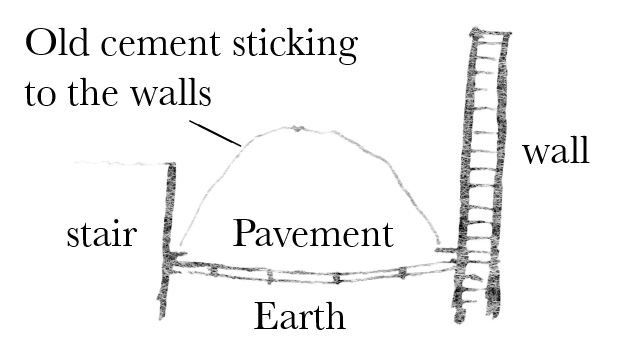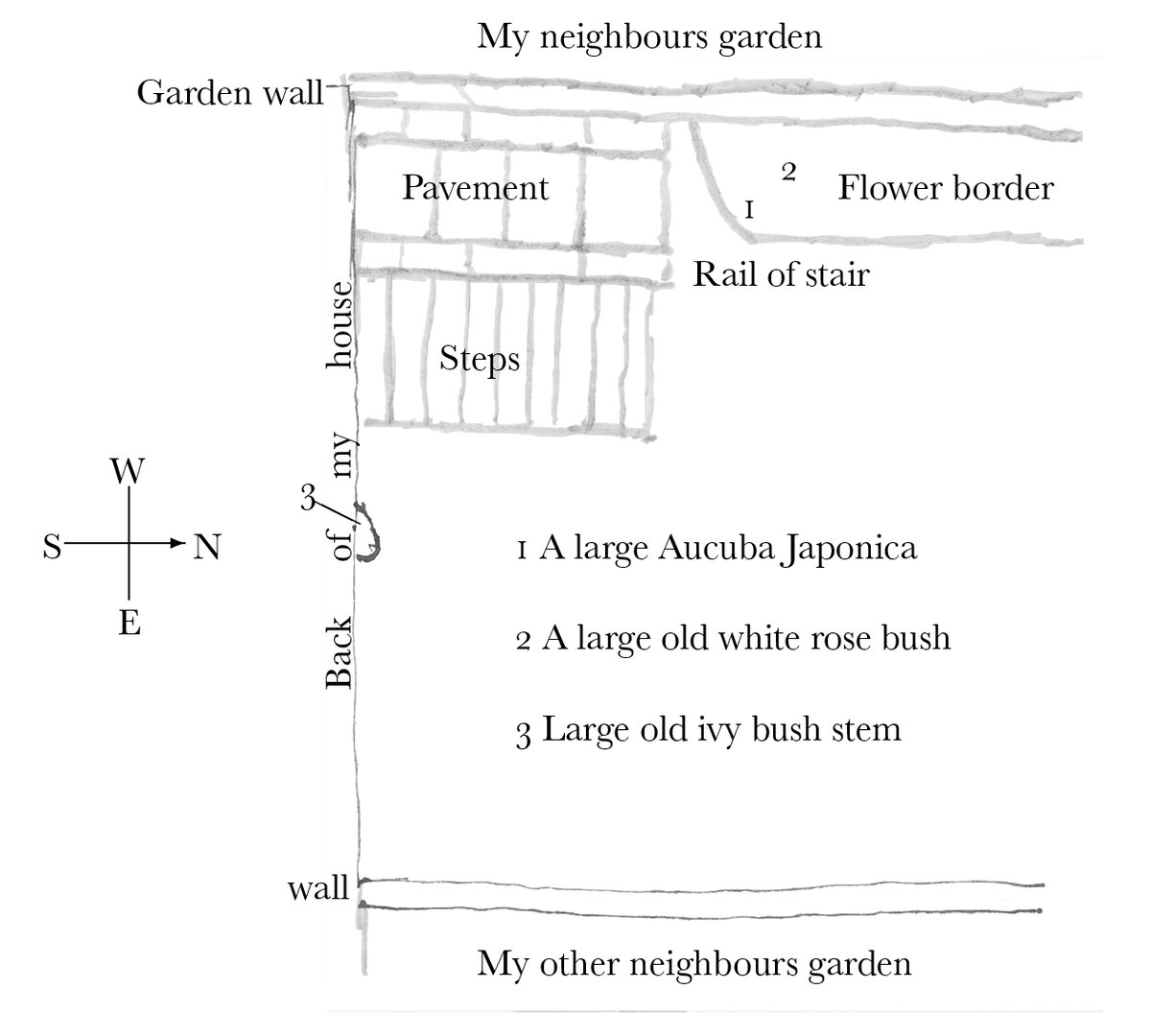From A. C. Ramsay 27 December 1871
Jermyn St.
27 Dec 1871
My dear Mr Darwin
Though tardy I hope I am not too late1
The pavement lies in a little garden, between a short outside stair & a brick wall. It is 7 feet in length by 3 ft 2 inches in width. Adhering to the walls there is the cement that I suppose originally was used when the stones were laid down. In the centre of the pavement (measuring across the width the stones seem to have sunk as near as may b⟨e⟩ three inches, and about two at the sides. At the upper end, where it adjoins the house there is no sinking close to the house, but it begins immediately outside that line of junction. A cross section is like this.

Measuring a square yard in the centre of the space, the average ⟨s⟩inking might perhaps be taken ⟨at⟩ about 2 inches.2
As far as I can make out ⟨the⟩ house was built about 1784, and may therefore be assumed to be 87 years old.
My informant on this point is Mr Mylne, whose ancestor built Holyrood, and the family have been architects & engineers ever since.3 He is curious abt the ages of houses.
I cannot say that the pavement was never moved all that time, but the stones seem to be old Portland stones, such as were much used long ago in London. I have only been 12 years in the house. I am confident abt the worms, in so far that I have frequently seen their leavings along the lines where the stones join
I noticed them on Monday last when I made the measurements. I cannot say what is the precise nature of the stuff below. What the worms bring up is black earth.
The native soil there is old Thames flint gravel partly in a clayey matrix. We have a well in it.
I forgot to measure the size of the stones. I will do so tomorrow morning.
Yours very truly | Andw C Ramsay
[Enclosure]

CD annotations
Footnotes
Bibliography
Earthworms: The formation of vegetable mould through the action of worms: with observations on their habits. By Charles Darwin. London: John Murray. 1881.
ODNB: Oxford dictionary of national biography: from the earliest times to the year 2000. (Revised edition.) Edited by H. C. G. Matthew and Brian Harrison. 60 vols. and index. Oxford: Oxford University Press. 2004.
Post Office London directory: Post-Office annual directory. … A list of the principal merchants, traders of eminence, &c. in the cities of London and Westminster, the borough of Southwark, and parts adjacent … general and special information relating to the Post Office. Post Office London directory. London: His Majesty’s Postmaster-General [and others]. 1802–1967.
Summary
Sends description and measurements of the 18th century courtyard pavement of his house, the stones of which have sunk as a result of earthworm action [see Earthworms, pp. 192–3].
Letter details
- Letter no.
- DCP-LETT-8122
- From
- Andrew Crombie Ramsay
- To
- Charles Robert Darwin
- Sent from
- London, Jermyn St
- Source of text
- DAR 176: 17
- Physical description
- ALS 4pp † sketch
Please cite as
Darwin Correspondence Project, “Letter no. 8122,” accessed on 20 April 2024, https://www.darwinproject.ac.uk/letter/?docId=letters/DCP-LETT-8122.xml
Also published in The Correspondence of Charles Darwin, vol. 19


